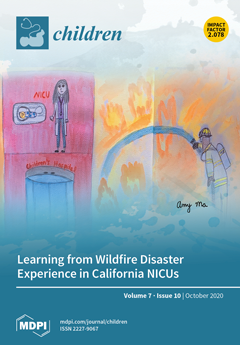Oxygen is a pulmonary vasodilator and plays an important role in mediating circulatory transition from fetal to postnatal period. Oxygen tension (PO
2) in the alveolus (PAO
2) and pulmonary artery (PaO
2) are the main factors that influence hypoxic
[...] Read more.
Oxygen is a pulmonary vasodilator and plays an important role in mediating circulatory transition from fetal to postnatal period. Oxygen tension (PO
2) in the alveolus (PAO
2) and pulmonary artery (PaO
2) are the main factors that influence hypoxic pulmonary vasoconstriction (HPV). Inability to achieve adequate pulmonary vasodilation at birth leads to persistent pulmonary hypertension of the newborn (PPHN). Supplemental oxygen therapy is the mainstay of PPHN management. However, optimal monitoring and targeting of oxygenation to achieve low pulmonary vascular resistance (PVR) and optimizing oxygen delivery to vital organs remains unknown. Noninvasive pulse oximetry measures peripheral saturations (SpO
2) and a target range of 91–95% are recommended during acute PPHN management. However, for a given SpO
2, there is wide variability in arterial PaO
2, especially with variations in hemoglobin type (HbF or HbA due to transfusions), pH and body temperature. This review evaluates the role of alveolar, preductal, postductal, mixed venous PO
2, and SpO
2 in the management of PPHN. Translational and clinical studies suggest maintaining a PaO
2 of 50–80 mmHg decreases PVR and augments pulmonary vasodilator management. Nevertheless, there are no randomized clinical trials evaluating outcomes in PPHN targeting SpO
2 or PO
2. Also, most critically ill patients have umbilical arterial catheters and postductal PaO
2 may not be an accurate assessment of oxygen delivery to vital organs or factors influencing HPV. The mixed venous oxygen tension from umbilical venous catheter blood gas may assess pulmonary arterial PO
2 and potentially predict HPV. It is crucial to conduct randomized controlled studies with different PO
2/SpO
2 target ranges for the management of PPHN and compare outcomes.
Full article






